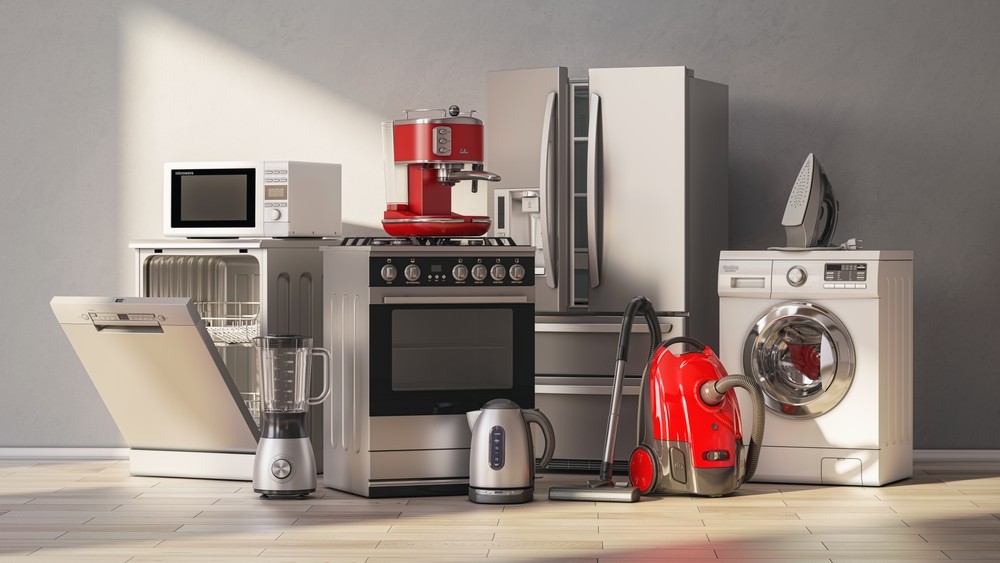Many households opt for cheap home appliances as an immediate solution to managing tight budgets. However, while these inexpensive devices seem economical upfront, their long-term costs can add up in significant ways. Beyond the initial price tag, other factors such as energy efficiency, durability, repair costs, and environmental impact profoundly influence the true cost of ownership. Understanding these subtle and often hidden expenses can better inform consumer choices, prompting a shift towards more sustainable and cost-effective investments in home appliances.
Initial Cost vs. Long-term Expense
The allure of cheap home appliances primarily stems from their lower purchase price. For many consumers, saving money upfront appears advantageous, especially for essential households that require immediate equipment. However, the initial cost is only one facet of ownership, as cheap appliances can lead to higher expenses down the line. Many budget-friendly models lack advanced technologies that enhance energy efficiency, leading to increased utility bills over the appliance’s lifespan. Additionally, lower-priced items are often made using substandard materials and components that degrade quickly, contributing to frequent breakdowns and the need for repairs or replacement.
Energy Efficiency
It’s crucial to consider energy consumption when evaluating the overall cost of home appliances. More expensive models typically feature advanced energy-saving technologies that reduce electricity and water usage. Although the initial cost might be higher, these appliances offer substantial long-term savings on utility bills. In contrast, cheaper appliances tend to rely on outdated technologies and less efficient systems, resulting in higher energy consumption.
Energy-efficient appliances can lead to reductions in household carbon footprints, aligning with an increasing societal push towards sustainable and environmentally conscious living. Devices with Energy Star ratings, for instance, guarantee lower energy use compared to their conventional counterparts. While initially more expensive, these appliances frequently pay for themselves over time through decreased monthly utility costs, making them a more financially sound choice.
Durability and Longevity
The longevity of home appliances also plays a critical role in determining their true cost. Many cheap appliances are manufactured with cost-cutting in mind, using low-grade materials to keep prices down. These compromises often result in shorter lifespans and decreased overall durability. Consumers may find themselves replacing or repairing low-cost appliances more frequently, ultimately leading to greater expense over time.
Higher-end models, while initially more costly, are often constructed with durable materials and engineered to withstand extensive use. These appliances frequently come with extended warranties, which provide added peace of mind and diminish the likelihood of surprise repair costs. In the long run, investing in quality appliances often proves to be more cost-effective as it reduces the frequency of replacement and maintenance needs.
The Cost of Repairs and Maintenance
When considering the long-term expenses associated with cheap appliances, one cannot overlook potential repair and maintenance costs. Cheaper models tend to be more prone to defects and operational issues, often requiring frequent and costly repairs. Additionally, some budget devices may not even offer repair services or spare parts availability, rendering the appliance obsolete and necessitating complete replacement.
Investing in a more reputable and higher-rated appliance brand can mitigate these issues. These manufacturers usually provide a comprehensive service network and parts availability, in addition to reliable warranties that cover repair costs. This level of support ensures that customers can maintain their appliances with minimal expense and disruption over time.
Technological Obsolescence
Rapid technological advancement also influences the long-term cost of home appliances. High-end models generally integrate the latest features and smart technology, enhancing functionality and user experience. Cheaper appliances, however, often come with limited features and outdated designs, which quickly become obsolete as technology evolves.
Smart appliances can connect to the Internet of Things (IoT) networks, allowing for remote operation and monitoring. These functionalities provide added convenience and efficiency, driving down running costs over time. Investing in such technology may initially seem daunting due to higher upfront costs, but the dividends in convenience, efficiency, and long-term savings typically justify the initial outlay.
Environmental Impact
The environmental costs associated with the production, use, and disposal of cheap appliances present another significant hidden expense. Inexpensive models often have higher carbon footprints due to inefficient manufacturing processes and increased energy consumption. Furthermore, their shorter lifespan means more frequent replacement, contributing to increased electronic waste.
Choosing to invest in quality appliances not only helps reduce utility costs but also plays a role in environmental stewardship. Long-lasting, energy-efficient appliances result in less waste and fewer resources used over time. Brands focusing on sustainability also often incorporate recyclable materials, further lessening the ecological impact of their products.
The Hidden Costs of Rapid Replacement
The cycle of frequent replacement associated with cheap appliances not only leads to increased waste and environmental damage but further imposes hidden financial costs. The time and effort spent researching, purchasing, setting up, and familiarizing oneself with new devices are often overlooked factors that contribute to the overall cost of frequent appliance replacement.
Consumers must navigate through shopping options and delivery logistics while managing the disruption caused by non-functional appliances. These hurdles consume valuable time and energy that many cannot afford to spare, resulting in indirect costs to the consumer beyond mere financial considerations.
Socioeconomic Considerations
It’s important to acknowledge that not everyone has the option to purchase high-end appliances due to financial constraints. In such situations, people may feel forced to consistently choose cheaper models. However, this could lead to a cycle of repeating purchases that are financially draining in the long term.
Solutions to break this cycle include financial planning for anticipated appliance expenses, seeking out sales and discounts on energy-efficient models, and considering second-hand options for high-quality appliances. Community programs or government incentives aimed at promoting energy efficiency might also provide assistance for those looking to invest in better appliances.
Making Informed Decisions
For those aiming to manage household budgets effectively without sacrificing long-term savings and environmental considerations, making informed decisions when purchasing home appliances is key. Prioritizing appliance quality, energy efficiency, and suitability for household needs can significantly influence the true cost of ownership.
Consumers should research product reviews, examine energy consumption ratings, and compare different models before making a purchase. Seeking out expert opinions or consulting with sales representatives can also provide valuable insights into the long-term performance and efficiency of appliances.
Ultimately, cheap choices at face value can lead to expensive consequences over time—and while not always immediately apparent, these costs become particularly evident as utility bills rise, repairs are needed, and appliances require replacement all too soon. Understanding the comprehensive cost of ownership will empower consumers to make smarter investments, opting for solutions that not only meet immediate needs but support financial and environmental goals in the long run.



